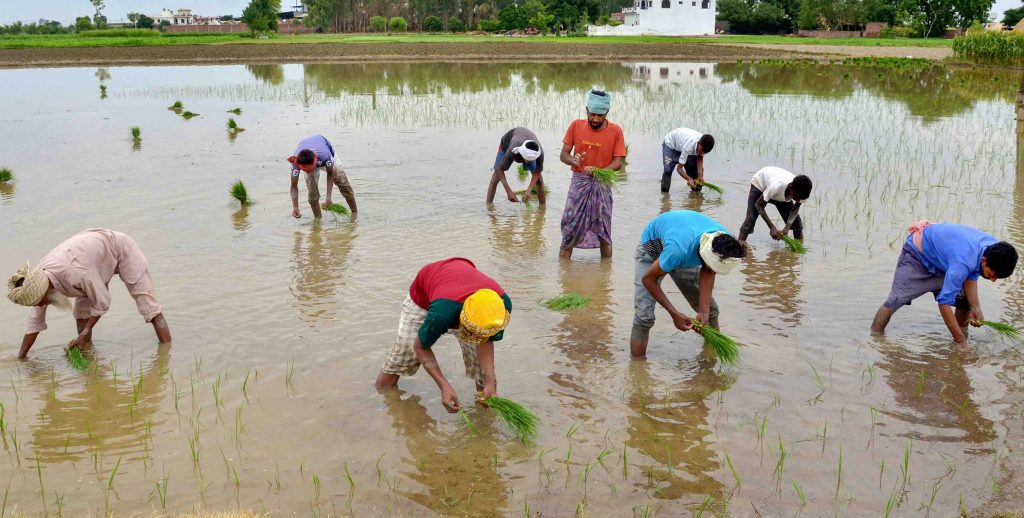Jajpur: Even as there is a need for at least 238.5mm rain to grow paddy crop in this district, it has rained just 195.64 mm this year. So the shortfall has been close to 18 per cent. The shortage in rainfall at the outset of the monsoon has hit the farm sector, said farmers in the district. Korei block, which is said to be the gateway of industries in the district , has received just 99mm rain, Danagadi block 169.70mm and mineral-rich Sukinda block has received 195.20mm.
Massive industrial pollution is stated to be the main reason for the shortage in rainfall in the district. The made-made climate changes have been responsible for the delinquent monsoon, said local intelligentsia.
The IMD had predicted a normal monsoon this year. A normal monsoon can increase farm production and will also be favourable for the growth in service, industrial and allied sectors. This could also reduce the economic sluggishness, unemployment and socio-economic instability, triggered by the Covid-19 pandemic in the country.
However, the reduction in rain during this monsoon has been a new headache for the farmers here. Around 800 hectares of farmland in the district had been submerged in floods caused by the ‘Cyclone Yaas’ in May. The floods and the resulting sand-casting have killed the fertility of the land. Farmers had gathered courage to scoop out the sand and soil from the affected land to make it suitable for cultivation. However, deficit rainfall and a harsh dry-spell in June have created a fear of drought in the minds of the farmers.
The authorities have planned cultivation of paddy in over 1.11 lakh hectares out of 1,43,645 hectares of arable land in the district during this kharif marketing season (KMS). Farmers had begun preparation for growing paddy. However, lack of rain in June has put up fresh hurdles before them.
Sources said farmers are still waiting for favourable conditions to for seeds to develop into saplings. As there was some rain in the second week of June, farmers had started sowing their land. However, the subsequent dry-spell has sapped the seedlings in many areas, farmers said.
Meanwhile, the Odisha State Pollution Control Board (OSPCB) has failed to control the runaway industrial and environmental pollution in Kalinganagar industrial area. It is alleged that the violations take place because of a nexus between the plant authorities and the OSPCB. Toxic gas emanating from the plants pollutes the atmosphere.
Mindless felling of trees in the mining areas and zero re-plantation have added to the industrial pollution and the erratic rain pattern, said environmentalists. Because of this, the rainfall in the district has come down sharply this year. Jajpur block has recorded 153mm rain, Binjarpur block 166.55mm rain, Dasrathpur block 231mm, Rasulpur block 169.68mm, Dharmasala block 268mm, Badachana 286mm and Bari block has recorded 217mm rain.
An analysis of the pattern of the rainfall in the district shows that the mining and its adjoining areas have recorded lesser rainfall compared to other areas.
Usually, paddy crop depends on monsoon rain during June, July and August. However, this year has seen an erratic pattern of rain.
Moreover, even though the district has a good network of rivers, there are no irrigation facilities in the district. Work on the left side canal of the Rengali water project has not been over in the definite timeframe.
As a result of this, canals, minor irrigation projects, bore wells and dug wells that have been already developed in the district are not coming to use as and when there is a need for water for the farm sector.
